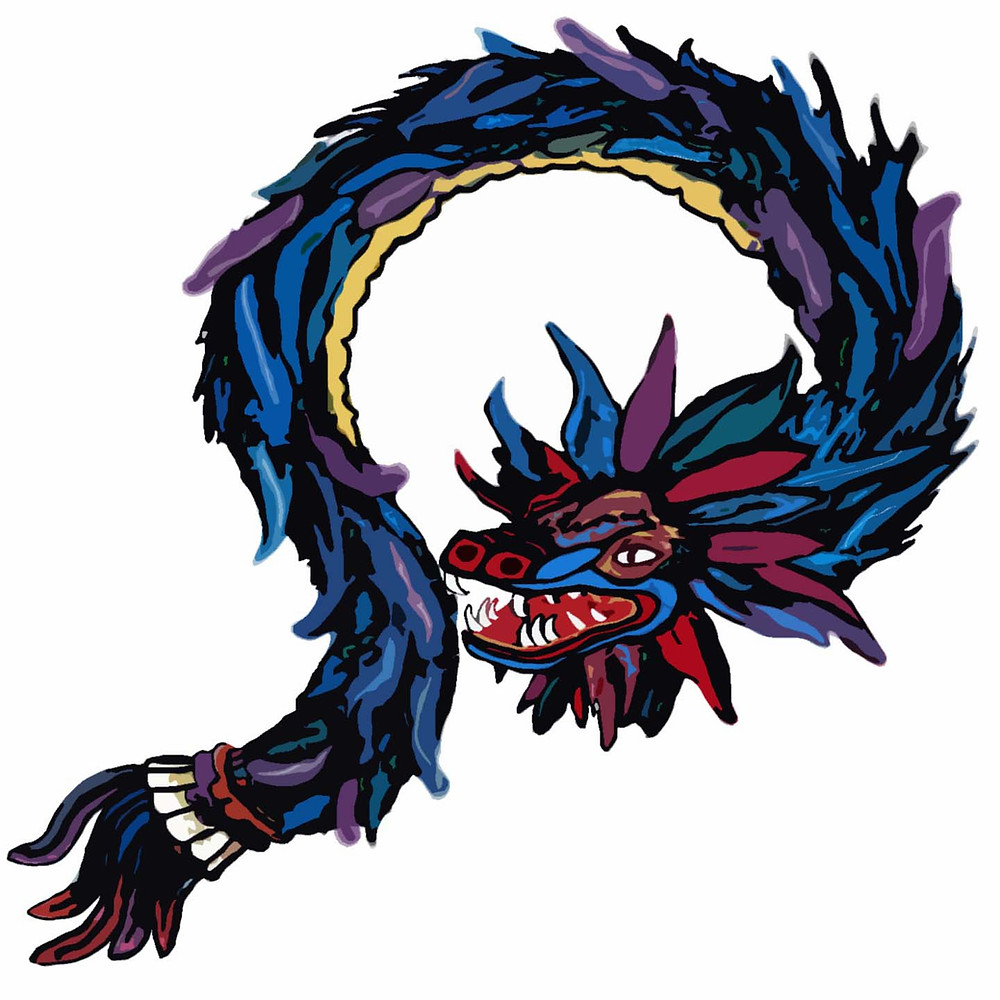
Warrior, rain and wind god, and spirit of the maize, Quetzalcoatl —the most familiar of the Mesoamerican gods— is better known for his attributes than for his complex history. As such, Quetzalcoatl, the feathered serpent, is a figure that encloses a myriad of symbols and meanings.
Described as taken the form of a colossal serpent covered in feathers, he wears around his neck the "wind breastplate" ehecailacocozcatl, symbolizing its ruling over hurricanes, dust devils, seashells, and whirlpools, all elemental forces of significance for the Nahuas (Zapotecs, Olmecs, Toltecs, Aztecs, and others) and that dominated Aztec Mythology. But Quetzalcoatl also had had anthropomorphic forms, for example when appearing as Ehecatl, the wind god.
To the Aztecs, Quetzalcoatl was a boundary-maker (and transgressor) between earth and sky. A creator deity having, he contributed to the making of humankind. Most Mesoamerican cosmologies—myths about the creation of the universe—included cycles of suns. Our current time was considered the fifth sun, with the previous four sun having been destroyed by flood, fire and the chaos shaped as monsters. After the Fourth Sun ended, Quetzalcoatl went to Mictlan, the Aztec Underworld, and with the help of Cihuacoatl, created the humans to populate the Fifth Sun from the bones of the previous races. To do such thing, he used blood, from a wound he inflicted on his earlobes, calves, tongue, and penis, and imbued the bones with new life.
References
-León-Portilla, M., 1968. Quetzalcóatl. Fondo de cultura económica.
-Florescano, E., 1999. The myth of Quetzalcoatl. JHU Press.
-Taube, K.A., 1992. The Temple of Quetzalcoatl and the cult of sacred war at Teotihuacan. RES: Anthropology and Aesthetics, 21(1), pp.53-87.